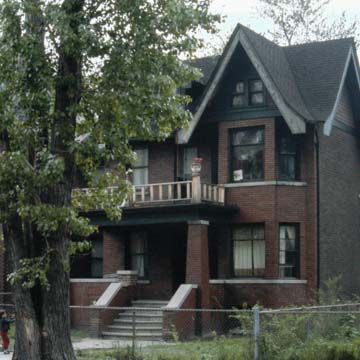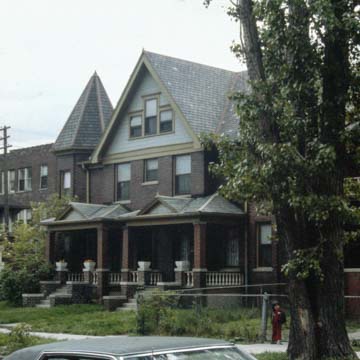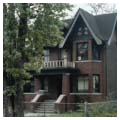This intact, middle-class, streetcar suburb some two miles from downtown Detroit is noted for its livability today. In 1974, when the Citizens District Council and residents planned its preservation, the neighborhood was named after William Woodbridge, territorial governor from 1819 to 1820 and an original landowner of the early French ribbon (long lot) farm here. Beginning in 1870, small working-class cottages went up in the western sector; around 1871 larger houses, many Queen Anne, were constructed in the southeastern portion. Interspersed throughout the neighborhood are multiple-family buildings. From 1900 to 1915, when the neighborhood experienced its most explosive growth, Commonwealth and Avery streets were built up almost entirely. The red brick Gothic Revival Trumbull Avenue Presbyterian Church (Pilgrim Church, 1887, Julius Hess with Richard Raseman) remains at 1435 Brainard Street. But it was the now demolished house of newspaper publisher James Scripps at the present Scripps Park and Trinity Episcopal Church ( WN50) that set the tone for the neighborhood.
You are here
Woodbridge Neighborhood
1860–1920. Commonwealth, Avery, and Trumbull sts., bounded by Grand River Ave., Edsel Ford Fwy., and Rosa Parks Blvd.
If SAH Archipedia has been useful to you, please consider supporting it.
SAH Archipedia tells the story of the United States through its buildings, landscapes, and cities. This freely available resource empowers the public with authoritative knowledge that deepens their understanding and appreciation of the built environment. But the Society of Architectural Historians, which created SAH Archipedia with University of Virginia Press, needs your support to maintain the high-caliber research, writing, photography, cartography, editing, design, and programming that make SAH Archipedia a trusted online resource available to all who value the history of place, heritage tourism, and learning.


















